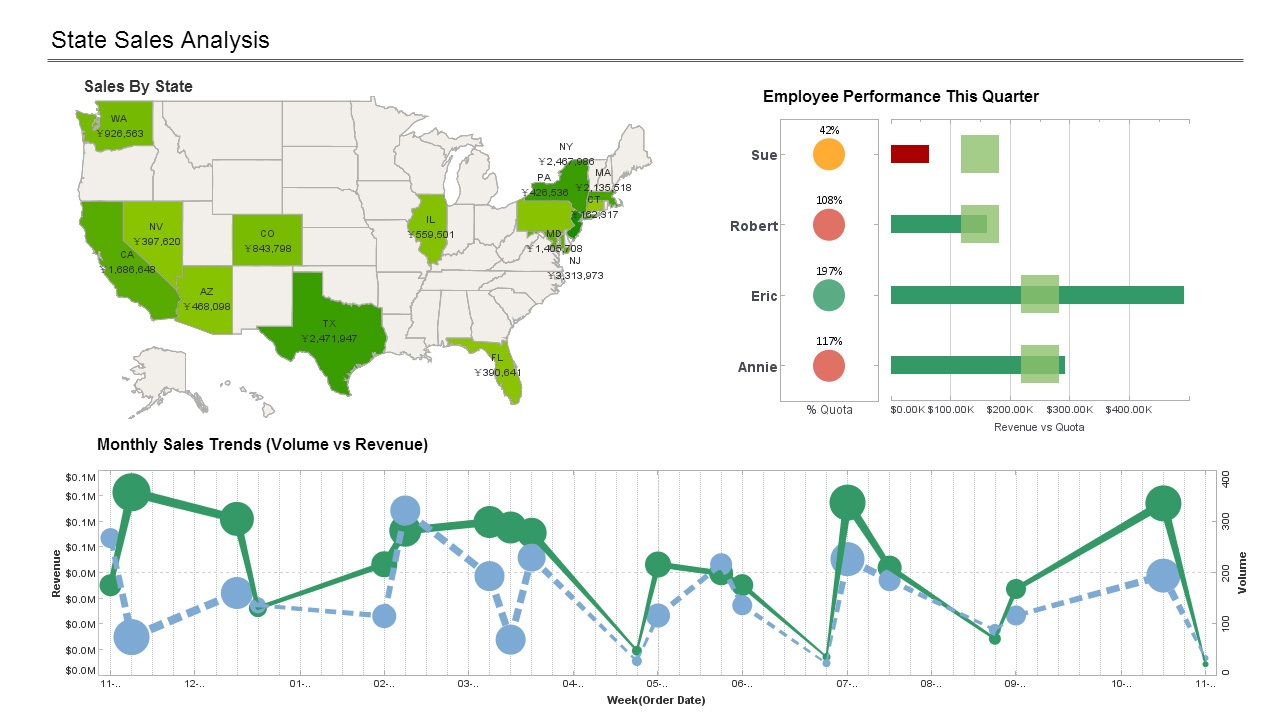Report Table Transformer
Table transformer classes are table lens classes that project a different view into other table lenses. Style Intelligence provides two built-in table transformers, RotatedTableLens and SubTableLens.
RotatedTableLens
The RotatedTableLens transformer switches the rows and columns of the original table. Suppose we have a table represented by a TableLens object, table1:
|
Jan |
Feb |
Mar |
|
1 |
2 |
3 |
We can rotate the table, so the rows in the original table become the columns in the new table,
layout.addTable(new RotatedTableLens(table1));
This would print a table with the rows and columns switched:
|
JAN |
1 |
|
FEB |
2 |
|
MAR |
3 |
SubTableLens
The SubTableLens transformer extracts parts of a table as a new table. It supports several ways to specify which parts of the table to extract.
Table 6. SubTableLens extraction methods
|
Constructor |
Description |
|
SubTableLens(TableLens, int rows[], int cols[]) |
The new table consists of the cells at the intersections of the rows and columns. |
|
SubTableLens(TableLens, int row, int col, int numrow, int numcol) |
The new table consists of the region defined by the number of rows/columns from the upper-left cell (row, col). |
|
SubTableLens(TableLens, Rectangle region) |
The region is equivalent to the above construct parameters where region.x == col, region.y == row, region.width == numcol and region.height == numrow. |
Presenters
InetSoft products support the concept of a presenter. A presenter is an object that draws a graphical representation of an object value. A presenter is usually assigned to a particular column of a table. However, it can also be associated with an object type, and then applies to all objects of this type in a document, including the objects added as individual elements using StyleSheet.addObject(Object) and the objects returned from the TableLens.getObject() method. Therefore the presenter is really not strictly a table concept, but is generic to the report. We choose to describe presenters within the context of a table because that is where they are normally used.
More Articles About Reporting
Application for Tracking and Improving Performance - Are you looking for a good application for tracking and improving performance measures? InetSoft's pioneering dashboard reporting application produces great-looking web-based dashboards with an easy-to-use drag-and-drop designer. Get cloud-flexibility for your deployment. Minimize costs with a small-footprint solution. Maximize self-service for all types of users. No dedicated BI developer required. View a demo and try interactive examples...
Data Virtualization Process - That's the first step in a data virtualization process, to create this normalized or base model disparate data. The second step is to transform it, improve its quality and integrate it into new data models. The third step is to expose this information through as a virtual relational database or as a Web service, such as an XML feed, or something that can be accessed as a Java Object or as a Java Portlet or as a SharePoint Web Part. The reason you want to do that is so you have reusability of these data models to serve multiple applications. You are basically providing virtualized access. Now in runtime, any external application would call the dashboard or report created in this data mashup platform. The platform would understand the query, optimize it and may decide automatically or in design time whether to pull real-time or cached data, in which case a scheduler is invoked to pre-fetch the data...
Evaluate InetSoft's PMO Reporting Dashboard Solution - Are you looking for a good PMO reporting dashboard application? InetSoft is a pioneer in self-service dashboarding and offers an easy tool for project management. View a demo and try interactive examples...
Options for a Data Dashboard - InetSoft's dashboard software provides users with sophisticated dashboard data options that allow for a high level of data manipulation. View the example below to learn more about the Style Intelligence Solution. You can use a Variable from the Asset Repository in the filtering condition of a Worksheet Data Table, Named Condition, or Named Grouping. Follow these steps...
Process Massive Amounts of Data and Make Good Predictions - Machine learning-based applications employ algorithms that can deliver an excellent analysis of vast amounts of data and create predictions, even when you continue to feed them with updated data and information. Improve logistics and satisfy a larger demand by using smart cameras and supply chain solutions Predict customer behavior based on data related to prices, economic conditions, and season Analyze unprecedented amounts of data and identify the strengths and weaknesses of your business Scale your business and improve customer service by getting insights from the data provided by leads and customers...
Trends in Embedded Business Intelligence - What we are going to be talking about is a concept of embedded business intelligence, where analytical capability is integrated or as a module or extension within other software applications. What you are going to hear really is two different perspectives around the value of embedded BI, so you will hear the end user perspective of why BI matters and why companies are taking this type of embedded approach. Really, my hope is that you will be able to draw analogies to your own organizations and your own toolsets to understand how BI in these types of analytical capabilities might be able to make a significant impact on the way that you do business...
| Previous: Using Tabular Data in a Report |
